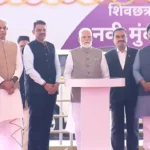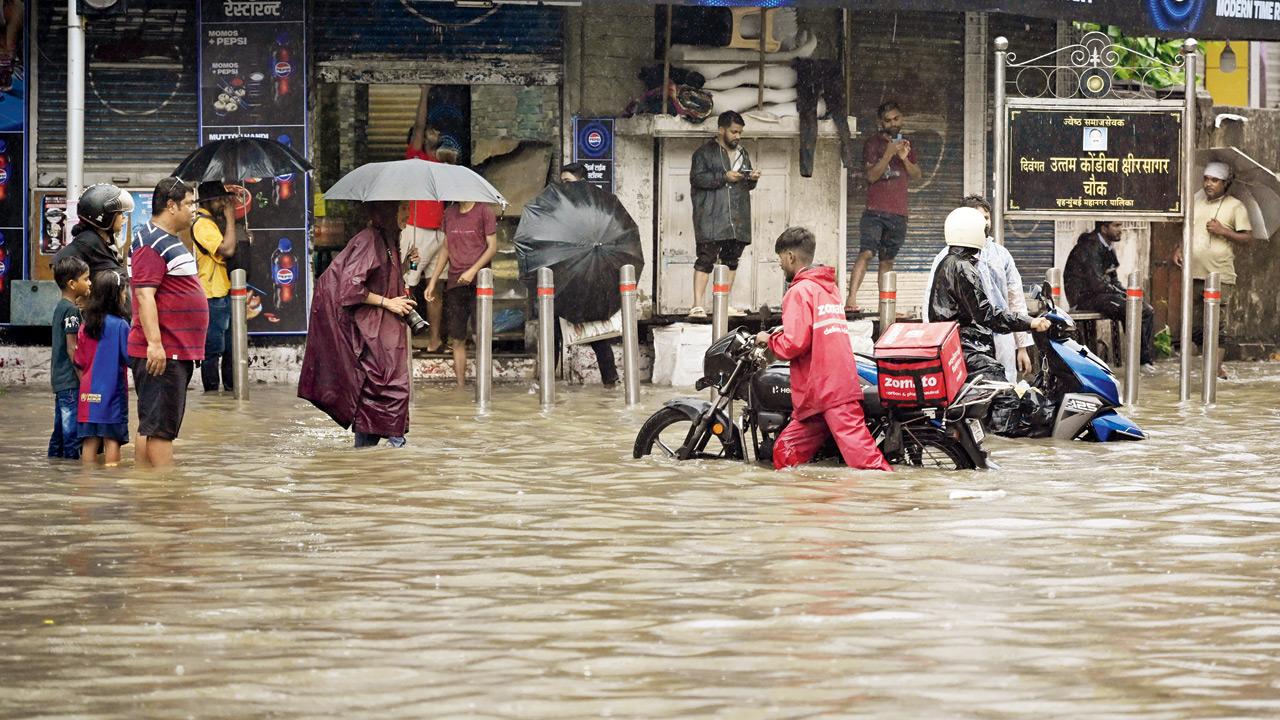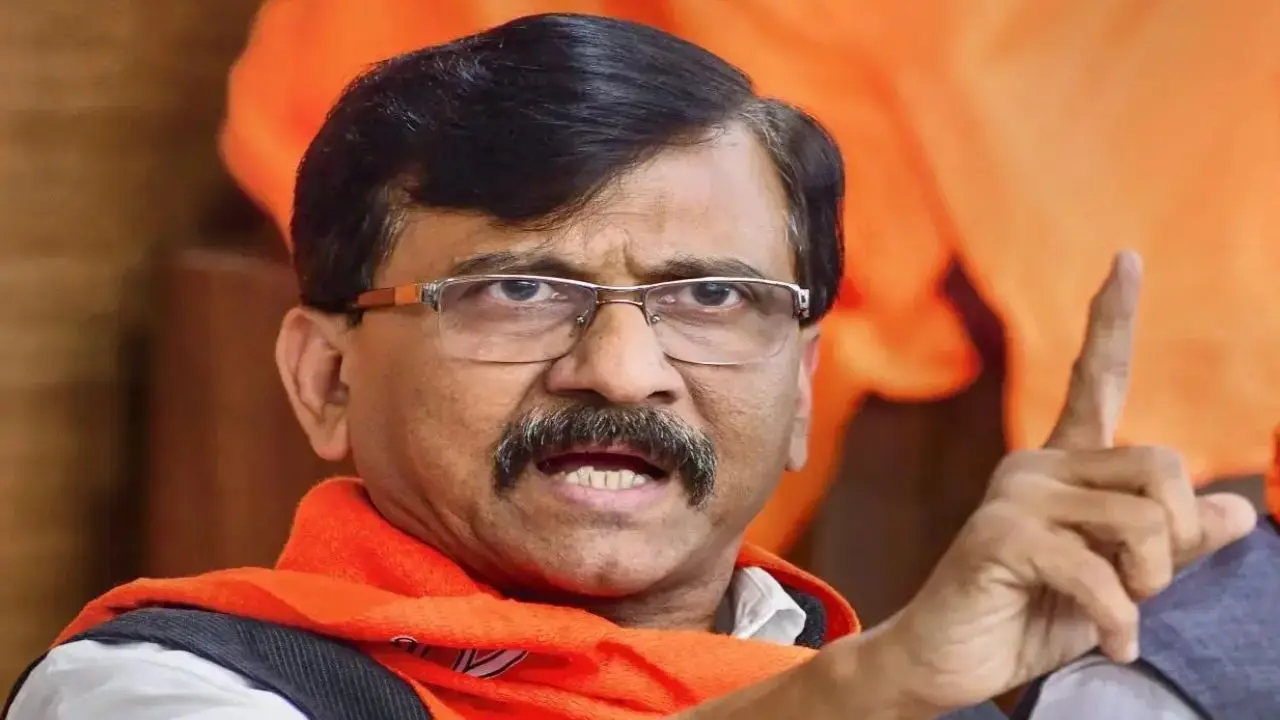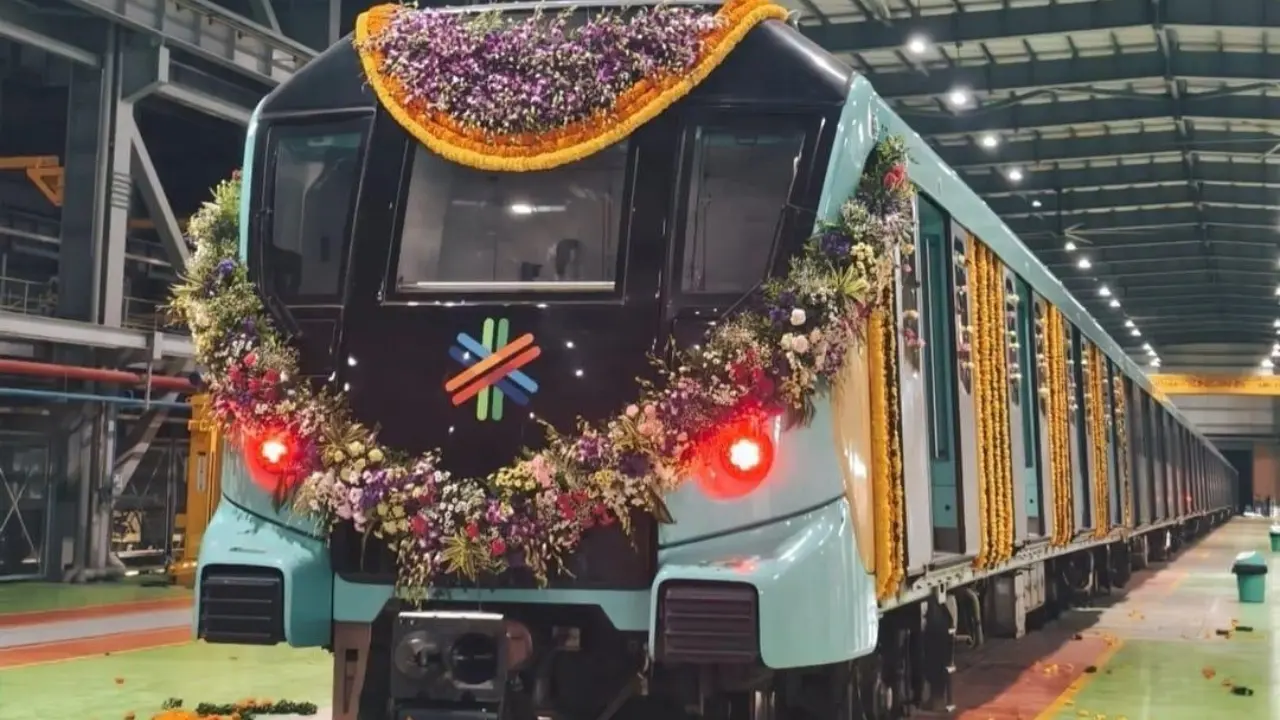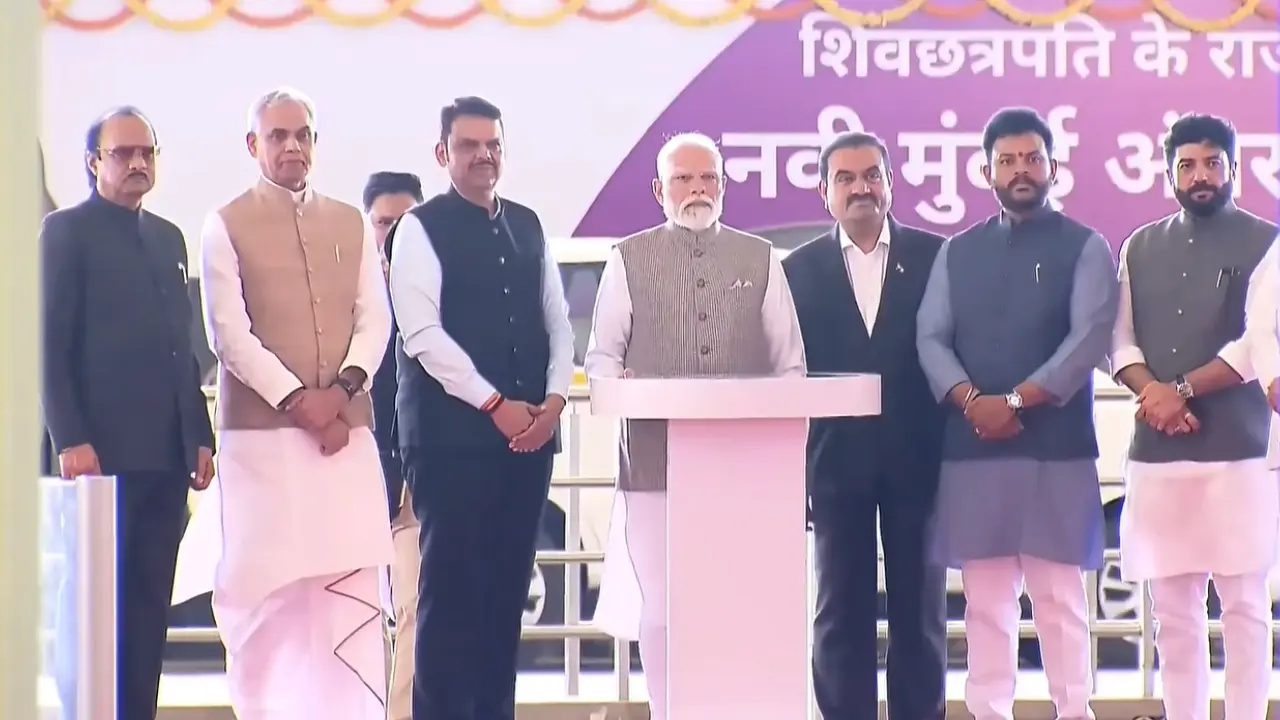In light of multiple instances of waterlogging recently recorded in Dadar East’s Hindmata, despite work being carried out by the Brihanmumbai Municipal Corporation (BMC) to prevent such occurrences in the flood-prone area, the civic body is now looking at undertaking additional work at the spot. The new work, likely to be taken up by the municipal corporation within the next two years and expected to cost approximately Rs 600 crore, will adhere to measures outlined by the Brihanmumbai Storm Water Disposal System (BRIMSTOWAD) project.
Hindmata in Dadar East, an area prone to waterlogging, on May 26. PIC/ASHISH RAJE
Hindmata is a saucer-shaped, low-lying area in the heart of the city that gets waterlogged every monsoon season. According to information provided by the BMC, there are stormwater drains along six sloped roads around this ‘saucer’ that bring rainwater from the adjoining areas of Dadar TT, Naigaon, Parel, Bhoiwada, and Fitwala Lane towards Hindmata. This water then flows towards the Britannia pumping station due to the natural gradient of the area.
Case history
In 2021-22, the BMC completed construction of underground water holding tanks below the Hindmata flyover on Babasaheb Ambedkar Road, which can temporarily store rainwater in case of heavy rainfall. The tanks were planned to be 100 metres in length, 60 metres in width, and with a storage capacity of 30 lakh litres of water. The water from these tanks is carried to underground tanks at Pramod Mahajan Udyan on Senapati Bapat Road and St Xavier’s ground in Parel. According to figures from BMC, the project cost the civic body close to R200 crore. It brought the water receding time of logged water from between 8 and 12 hours down to an hour or two. In addition to this, the BMC sets up about nine to 11 dewatering pumps at Hindmata every monsoon, which help pump street water into the underground tanks at high capacity during heavy rainfall.
The new project
Based on the recommendations of the BRIMSTOWAD project, the BMC is looking at augmenting the drain capacity at Hindmata to deal with heavy rainfall. A senior civic official told mid-day, “We have explored the option of augmenting drain capacity to contain more than 100 mm of rain. However, experts from IIT-B [Indian Institute of Technology Bombay] suggest augmenting this to handle about 120 mm of rain.” Chalking out the road map ahead, the BMC has set its eyes on exploring two options to facilitate the project:
In July this year, the civic body decided to submit a master plan to the National Disaster Management Authority (NDMA), which has been prepared in coordination with the IIT. Currently, Mumbai`s stormwater drainage system is designed to handle only 55 mm of rainfall per hour. This plan aims to augment the system to handle up to 100 mm to 120 mm of rainfall in the same period. Mumbai’s proposal to NDMA outlines plans up to R500 crore for flood mitigation, according to information from elected officials in the state government.
Through the Maharashtra government, the BMC is set to initiate talks with Japan International Cooperation Agency (JICA) to explore long-term measures to mitigate waterlogging across Mumbai, including Hindmata, according to information from the BMC. A JICA delegation is to visit Mumbai on September 25. The talks will be facilitated through Maharashtra Institute for Transformation (MITRA), which is working on long-term projects spanning over 10 to 15 years to understand the impacts of climate trends on cities and facilitate projects that can address the needs of infrastructure in tune with the demands of climate change.
A senior civic official said, “To bring about 100 per cent relief through infrastructure, we are looking at investments that can be viewed as disproportionate to the impact, especially because we are spending public money. Due to changing climatic conditions, what was held to be true 20 to 25 years ago has changed dynamically over time. Policy is trying to keep pace with the requirements of changing times.”






